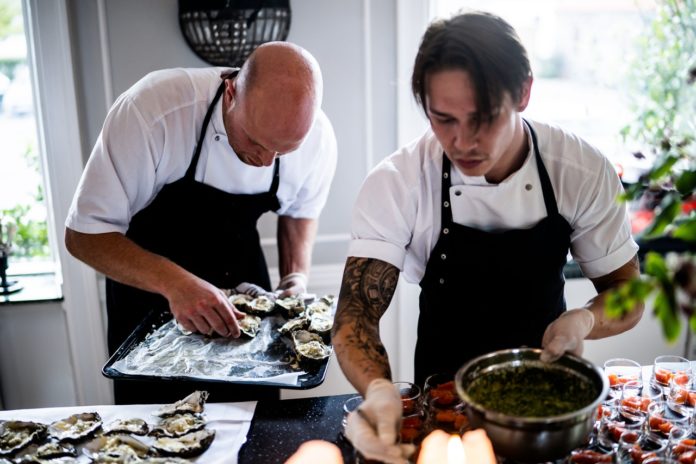Catering equipment and commercial kitchens have changed a lot over the past three decades as the needs of the consumer have also changed. Technology has also forced changes for businesses. At the start of the 80s, cooking programmes were few and far between. They were often experienced chefs or bakers showcasing simple dishes.
Now, YouTube, TV and other social media channels have changed how consumers view food. When Twitter first started, one of the main themes was people taking pictures of breakfasts, lunches and dinners. This food trend on social media revolutionised how the world connected with food. Suddenly there were also social media influencers that could tell people how food should look.
As a result, the industry had to change. Too often commercial kitchens were turning out food that tasted good but looked like it was cooked at home. While some, notably older generations, would enjoy this style, younger generations wanted to see food taken to the next level on appearance.
Changing food trends
There have been major trends that challenged the way that catering equipment and commercial kitchens should be arranged. This is often due to the fact that customers are now evolving preferences and requirements.
Since the latter half of the twentieth century, there has been a larger focus on food allergies, intolerances and preferences. Just in the last few years, vegan food has become mainstream. In 2018, there were an estimated 600,000 vegans within the UK. All eateries now have to consider their requirements within the kitchen.
Other trends that have seen growth in the past decade are organic, locally sourced, and sustainable foods. According to statistics, there is about a 5% growth year-on-year. By 2020, the UK organic food market will be worth £2.5 billion.
This is causing significant challenges for commercial kitchens.
Chefs in commercial settings have to think about all guests and how they can accommodate everyone. This includes ensuring that allergens are kept away from foods that are supposed to be free-from and ensuring guests who want specific food are catered for, within reason.
Changing technology
At the same time as presentation, the way food is cooked has changed. In the 1970s and 1980s, there was a lot of frying of food. However, health concerns of food being cooked like this have led to less frying and new ways to cook. It has also forced changes with cooking equipment within commercial kitchens.
Now there is commercial cooking equipment that can do more than one job. Combi ovens are more impressive, offering a wider range of functions that can offer meals cooked to a more consistent level.
In addition, technology has become more aesthetically pleasing. This has become important because hygiene standards within the commercial environment have become stricter. This is partly due to the awareness of better allergy maintenance, but also because customers have greater expectations.
A lot of catering equipment is now stainless steel. This is easier to clean and looks sharper for longer.
Changing the way kitchens are designed
A final change in catering equipment and commercial kitchens is the way they are designed. Many kitchens in the past were in large rooms with little equipment in them. There was a lot of space to move around. Now kitchen spaces are becoming smaller and more equipment is squeezing it further.
It is harder to think about kitchen design in the old style where everything was done on paper. Now kitchen design is done via virtual reality. There are several benefits to this. First, kitchen designs can be more accurate, with designs planned to every millimetre.
In addition, the final appearance of the kitchen can be viewed in representation of the kitchen. So when a kitchen is designed, the end-user can see how it will look and request changes early on.
This is allowing for caters to have more say and control over their final kitchen design. They can also make better plans on how to accommodate so many different styles of food and food requirements.
What is next for catering equipment and commercial kitchens?
The future is bright for catering equipment and commercial kitchens. Customers are being more demanding in the food they are served. They expect elegance, taste and specific requirements to match. However, equipment is also there to supply all of this.
What will come next for commercial kitchens is for the demand for them to be carbon neutral. Kitchens will have to prove that they are sustainably sourcing produce that is cooked and that their cooking process is being done at a point where there is little carbon footprint.
You can already see some big brands, like Nandos, look at this aspect. In 2018, they opened their first eco-friendly eatery. Other brands are sure to follow soon. And the first restaurants to follow will benefit; just as Nandos did when they saw the number of customers grow by 300% with their eco-friendly restaurant.







